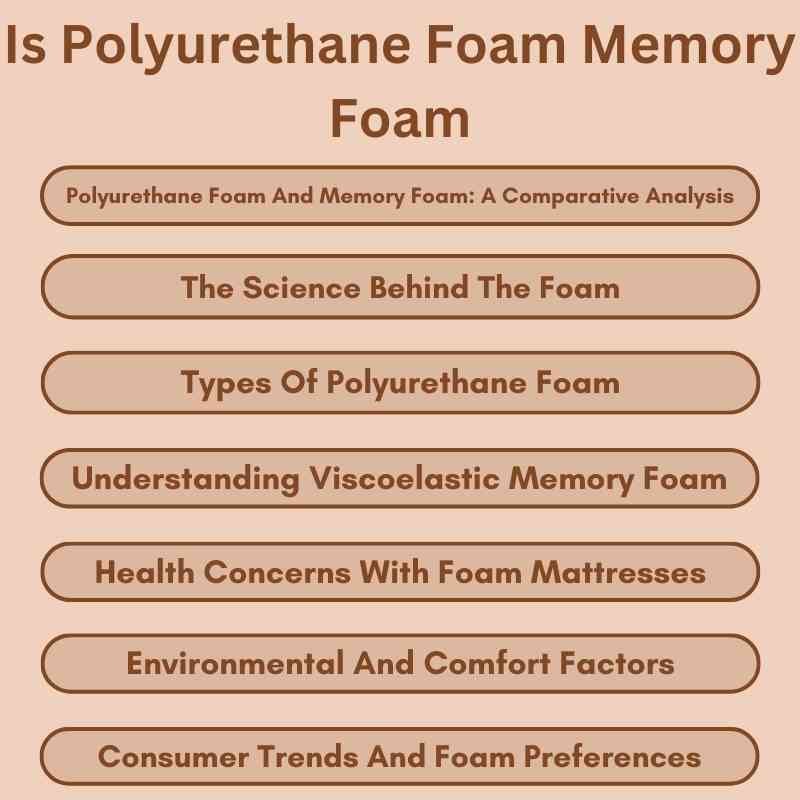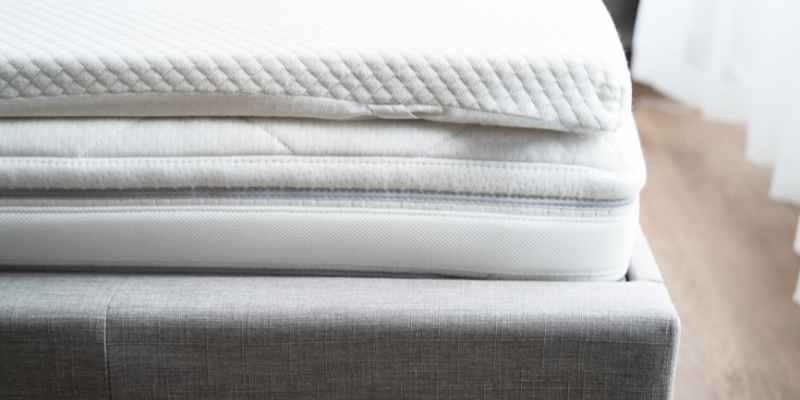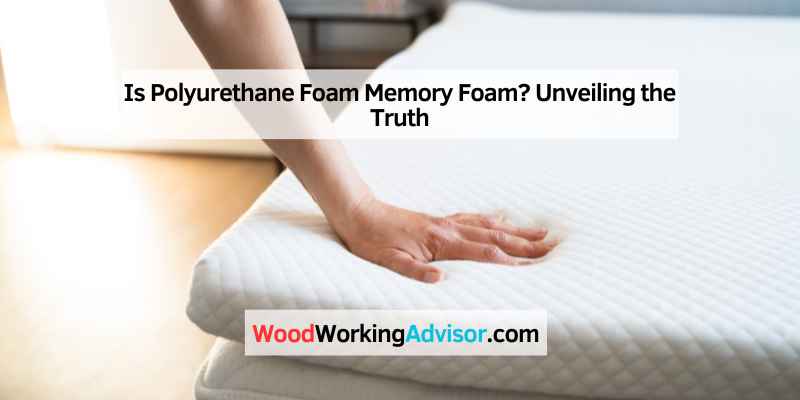Yes, polyurethane foam is a type of memory foam. It is a specific form of polymer with open cellular structure.
Polyurethane foam is widely used due to its versatility, comfort, and durability. However, it emits potentially harmful volatile organic compounds, poses environmental concerns, and may retain heat. While it offers comfort, it also has drawbacks like off-gassing and heat retention.
Polyurethane foam is available in various forms such as memory foam, high resilience foam, and high density foam. Its open cellular structure allows it to be either rigid or flexible. Despite its popularity, the potential health risks and environmental impact should be carefully considered.
Polyurethane Foam And Memory Foam: A Comparative Analysis
When it comes to choosing the right foam for your mattress or furniture, understanding the differences between polyurethane foam and memory foam is crucial. Both types of foam have unique properties and characteristics that make them suitable for different applications. In this comparative analysis, we will delve into the basic composition of polyurethane foam and explore the unique properties of memory foam.
The Basic Composition Of Polyurethane Foam
Polyurethane foam is a type of polymer offered in both solid and foam form. It is known for its open cellular structure, which allows it to be either rigid or flexible. This versatility makes it a popular choice for a wide range of applications, including mattresses, furniture cushions, and insulation.
Some common types of polyurethane foam include memory foam, high resilience foam, and high-density foam. While polyurethane foam offers comfort and durability, it’s important to consider potential concerns such as off-gassing, heat retention, environmental impact, and firmness when evaluating its suitability for specific uses.
Understanding Memory Foam’s Unique Properties
Memory foam, also known as viscoelastic foam, is renowned for its ability to contour to the body’s shape, providing personalized support and pressure relief. This unique property is attributed to its sensitivity to temperature and weight, allowing it to mold to the body in response to heat and pressure.
In addition to its pressure-relieving properties, memory foam is known for its motion isolation capabilities, making it an ideal choice for mattresses and pillows. However, it’s important to note that memory foam may have drawbacks such as heat retention and off-gassing, which should be taken into consideration when evaluating its suitability for specific applications.

The Science Behind The Foam
Exploring the science behind foam reveals that polyurethane foam is distinct from memory foam. While memory foam offers unique benefits such as pressure relief, polyurethane foam is versatile and durable but may emit VOCs. Understanding the differences helps in choosing the right foam type for specific needs.
Exploring Density And L.F.D In Foam
Polyurethane foam is a type of polymer that can be offered in both solid and foam forms. It has an open cellular structure to achieve this form and can be rigid or flexible. Density is the weight of one cubic foot of foam, and I.F.D stands for Indentation Force Deflection. The higher the I.F.D, the harder the foam. Polyurethane foam has a range of densities, from low to high, and can be used in a variety of applications from mattress toppers to car seats.
Temperature Sensitivity In Memory Foam
Memory foam, a type of polyurethane foam, is known for its temperature sensitivity. It is made with a visco-elastic material that responds to body heat and weight, conforming to the shape of the body. This provides pressure relief and support where it’s needed most. However, some people find that memory foam can retain heat, making it uncomfortable to sleep on during hot summer nights.
In conclusion, while polyurethane foam and memory foam are related, they are not the same. Polyurethane foam is a versatile material that can be found in a variety of products, while memory foam is a specific type of polyurethane foam that is known for its pressure-relieving properties. Understanding the science behind foam can help you make an informed decision when choosing a foam product for your needs.
Types Of Polyurethane Foam
Polyurethane foam is not the same as memory foam. Memory foam is a type of polyurethane foam that has additional chemicals added to it to increase its density and viscosity. Other types of polyurethane foam include high resilience foam and high density foam.
Rigid Vs. Flexible Varieties
Polyurethane foam is available in both rigid and flexible varieties, each offering unique properties and applications. Rigid polyurethane foam is characterized by its high density and structural integrity, making it ideal for insulation and construction purposes. Its closed-cell structure provides excellent thermal insulation, making it an energy-efficient choice. On the other hand, flexible polyurethane foam, also known as polyurethane foam cushions, is widely used in the furniture and bedding industry. Its open-cell structure allows for superior cushioning and comfort, making it an excellent choice for mattresses, sofas, and upholstery.
High Resilience And High-density Options
When it comes to polyurethane foam, two important options to consider are high resilience foam and high-density foam.
High resilience foam, also known as HR foam, is characterized by its exceptional durability and ability to quickly bounce back to its original shape after being compressed. This makes it an excellent choice for seating applications that require frequent use, such as office chairs and car seats. Its high resilience properties ensure that the foam retains its shape and provides long-lasting comfort.
On the other hand, high-density foam is known for its excellent support and longevity. With a higher concentration of foam cells per cubic foot, high-density foam offers enhanced durability and can withstand heavy use without losing its shape or support. This makes it an ideal choice for mattress cores and other applications where long-term support is essential.
Whether you choose high resilience foam or high-density foam, both options provide exceptional comfort and longevity, making them popular choices in various industries.
Understanding Viscoelastic Memory Foam
When it comes to choosing the right mattress, it’s important to understand the different types of foam used in their construction. One popular type is viscoelastic memory foam, commonly known as memory foam. This unique material has gained popularity due to its ability to contour to the body, providing exceptional comfort and support. Let’s take a closer look at what makes memory foam different and why it has become a top choice for many sleepers.
The Role Of Added Chemicals
Memory foam is made from polyurethane foam, but with the addition of certain chemicals that give it its distinctive properties. These chemicals include polyols and diisocyanates, which react together to form the viscoelastic substance. These added chemicals are responsible for the foam’s ability to conform to the body’s shape and then slowly regain its original form once pressure is released.
Why Memory Foam Feels Different
Memory foam feels different from other types of foam due to its viscoelastic nature. Unlike traditional foams that bounce back quickly, memory foam has a slow response time, allowing it to contour and mold to the body. This unique characteristic provides a customized and cradling sensation, relieving pressure points and promoting better spinal alignment.
Additionally, memory foam has temperature-sensitive properties. It becomes softer and more pliable when in contact with body heat, allowing it to conform even more closely to the body’s contours. This feature contributes to the overall comfort and support provided by memory foam mattresses.
It’s important to note that memory foam can vary in density and firmness levels. Higher density memory foam tends to offer better support and durability, while lower density foam provides a softer and more plush feel. The choice between different densities depends on personal preferences and individual sleep needs.
In conclusion, understanding viscoelastic memory foam is key to making an informed decision when purchasing a mattress. The added chemicals and unique properties of memory foam set it apart from other types of foam. Its ability to conform to the body and relieve pressure points make it a popular choice for those seeking a comfortable and supportive sleep surface.
Health Concerns With Foam Mattresses
Polyurethane foam, including memory foam, is a popular choice for mattresses due to its comfort and durability. However, there are health concerns associated with foam mattresses, as polyurethane foam can emit potentially harmful volatile organic compounds (VOCs), which may cause respiratory irritation, trigger asthma symptoms, and increase the risk of cancer.
It is important to consider these factors when selecting a mattress.
Foam mattresses have been gaining popularity due to their comfort and support, but they also come with some health concerns. In this article, we’ll be focusing on polyurethane foam, also known as memory foam, and its potential health risks.
VOC Emissions and Potential Risks
Volatile organic compounds (VOCs) are chemicals that can be released from polyurethane foam mattresses. These chemicals can cause respiratory irritation, trigger asthma symptoms, and increase the risk of cancer over the long term. The emissions can continue for several years, leading to prolonged exposure and potential health risks. It is important to note that not all polyurethane foam mattresses emit the same levels of VOCs, and some manufacturers have taken steps to reduce emissions.
The Debate on Toxicity in Foam
There has been ongoing debate about the toxicity of polyurethane foam. While some studies have linked prolonged exposure to polyurethane foam with health risks, others have not found conclusive evidence of harm. It is important to note that many factors can contribute to the toxicity of polyurethane foam, including the manufacturing process, the chemicals used, and the amount of exposure.
It is important to consider the potential health risks of polyurethane foam when choosing a mattress. If you are concerned about VOC emissions and toxicity, consider looking for mattresses made with natural materials or those that have been certified by third-party organizations for low emissions. Additionally, proper ventilation in your bedroom can help reduce exposure to VOCs.
Environmental And Comfort Factors
Polyurethane foam, including memory foam, offers comfort and support, but there are environmental concerns to consider. While polyurethane foam is versatile and durable, it may emit potentially harmful volatile organic compounds (VOCs) that can cause respiratory irritation and long-term health risks.
It’s important to weigh the pros and cons of polyurethane foam mattresses, taking into account factors such as off-gassing, heat retention, and environmental impact.
Off-gassing And Heat Retention Issues
Polyurethane foam may release VOCs, causing respiratory discomfort. Heat retention is a common concern with memory foam due to its dense structure.
The Eco-impact Of Foam Production
The production of foam materials can have environmental repercussions. It’s crucial to consider the sustainability of foam manufacturing processes.
Consumer Trends And Foam Preferences
Polyurethane foam and memory foam are not the same. Polyurethane foam is a type of polymer that can be rigid or flexible, while memory foam is a viscoelastic foam that responds to body heat and pressure. Understanding consumer trends and preferences can help guide the selection of foam materials for products such as mattresses and furniture.
Why Some Shoppers Reject Memory Foam
Some shoppers reject memory foam due to heat retention and off-gassing issues.
Polyurethane Foam’s Market Position
Polyurethane foam holds a strong market position due to its versatility and durability.
Consumers are increasingly opting for polyurethane foam over memory foam for various reasons.
Why Some Shoppers Reject Memory Foam
- Heat retention and off-gassing concerns
- Perceived lack of support or firmness
- Environmental impact considerations
Polyurethane Foam’s Market Position
- Versatility and durability drive popularity
- Wide range of applications
- Comfort and longevity appeal to consumers
Making An Informed Choice
Polyurethane foam and memory foam are popular choices for mattresses, each with its unique characteristics. When deciding between the two, it’s essential to consider various factors to make the right choice for your needs.
Comparing Cost And Comfort
Memory foam typically costs more than polyurethane foam, but it offers superior comfort and support. Polyurethane foam is more affordable and suitable for those on a budget.
Assessing Durability And Longevity
Memory foam mattresses tend to have a longer lifespan compared to polyurethane foam mattresses. While both are durable, memory foam retains its shape and support for a more extended period.

Frequently Asked Questions
Is Polyurethane Foam Safe To Sleep On?
Yes, polyurethane foam is safe to sleep on, but it may emit potentially harmful volatile organic compounds (VOCs) which can cause respiratory irritation and other health issues.
What Type Of Foam Is Polyurethane?
Polyurethane foam is a type of polymer offered in both solid and foam form. It has an open cellular structure and can be rigid or flexible. Common types of polyurethane foam include memory foam, high resilience foam, and high density foam.
What Are The Pros And Cons Of Polyurethane Foam Mattresses?
Polyurethane foam mattresses offer comfort and durability, but may have off-gassing and heat retention issues.
Why Are People No Longer Buying Memory Foam?
People are no longer buying memory foam due to issues like heat retention and off-gassing, despite its comfort.
Conclusion
Polyurethane foam and memory foam are distinct materials with different properties and uses. While polyurethane foam offers versatility and durability, it may also come with concerns such as off-gassing and heat retention. On the other hand, memory foam provides excellent comfort but has drawbacks like off-gassing and heat retention.
Understanding these differences can help you make an informed decision when choosing a mattress or other foam products.

